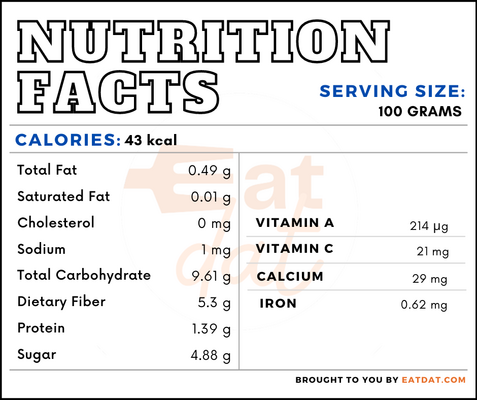
Blackberry
What is a Blackberry?
Blackberry is a small fruit that belongs to the rose family. It is a deep black color with a bulbous shape and juicy flesh. The fruit is classified as an aggregate and is not actually a berry, because it is composed of clusters of single seed drupelets.
- Though cultivated for its fruit, the blackberry may also be considered a weed in some circumstances.
- The fruits have a sweet and tart flavor when ripe, but unripe ones have a bitter taste.
Some common ways to use blackberries in the kitchen are:
- Jams
- Preserves
- Juice
- Cakes
- Pies
- Muffins
- Scones
- Cocktails
- Syrup
Origin of blackberries
The actual origin is uncertain; however, they may have originated in Asia, Europe, or the Americas. They have been used as a medicine in several distinct ancient cultures. Archaeological evidence dates blackberry consumption back to the Iron Age. For most of history, these fruits were foraged in the wild. It was in 1880 that Judge Logan started crossbreeding and the proper cultivation of the blackberry began in North America.
Nutrition
Nutritional profile for blackberries (100 g):

Blackberries are rich in micronutrients such as potassium, carotene, vitamin A, and lutein + zeaxanthin. Additionally, they contain sufficient amounts of calcium, magnesium, phosphorus, vitamin C, folate, choline, vitamin E, tocopherol, and vitamin K.
Blackberries are rich in phenolic acids, flavonoids, carotenoids, and anthocyanins. In addition, they have antimicrobial, anti-inflammatory, antiviral, and antioxidant properties. Regular consumption of this fruit may help fight obesity. Also, they are helpful in preventing diseases like diabetes, cancers, and cardiovascular diseases.
Commercial production
Guatemala is the largest producer of blackberries, followed by Spain, Canada, Australia, Argentina, Switzerland, and France. Blackberries thrive in sandy loamy soils with good drainage, and a moderately cool climate. The blackberry can be grown in two ways, from root cuttings or naturally occurring suckers. After they have matured, they are harvested and must be refrigerated immediately after plucking. However, they will last only a few days even with refrigeration, and hence must be canned, preserved, or frozen.
Blackberry recipes
These are mostly consumed raw or in baked goods, desserts, or confections such as cakes, cookies, ice cream, and jams. Also, they are a great addition to cocktails and other drinks. Here are a few recipes to try:
- Cobbler
- Sorbet
- Upside Down Cake
- Cookies
- Blackberry Jam
- Layered Blackberry Fool
- Chicken
- Bread Pudding
- Blackberry Ice Cream
- Mojito
- Blackberry Bramble
- Bourbon Smash
- Clafoutis
- Berry Summer Pudding
- Brombærsnitter
FDA regulations
The FDA describes all fresh fruits, including the blackberry, as raw agricultural commodity and strictly regulates all aspects of its growing, harvesting, packing, and storage. Juice made from blackberries must contain at least 10 percent pure juice.
References
Catherine Boeckmann, Planting, Growing, and Harvesting Blackberries, The Old Farmer’s Almanac, https://www.almanac.com/plant/blackberries
Solverson, Patrick M et al. “Blackberry Feeding Increases Fat Oxidation and Improves Insulin Sensitivity in Overweight and Obese Males.” Nutrients vol. 10,8 1048. 9 Aug. 2018, doi:10.3390/nu10081048, https://www.ncbi.nlm.nih.gov/pmc/articles/PMC6115824/
Zia-Ul-Haq, Muhammad et al. “Rubus fruticosus L.: constituents, biological activities and health related uses.” Molecules (Basel, Switzerland) vol. 19,8 10998-1029. 28 Jul. 2014, doi:10.3390/molecules190810998, https://www.ncbi.nlm.nih.gov/pmc/articles/PMC6271759/
